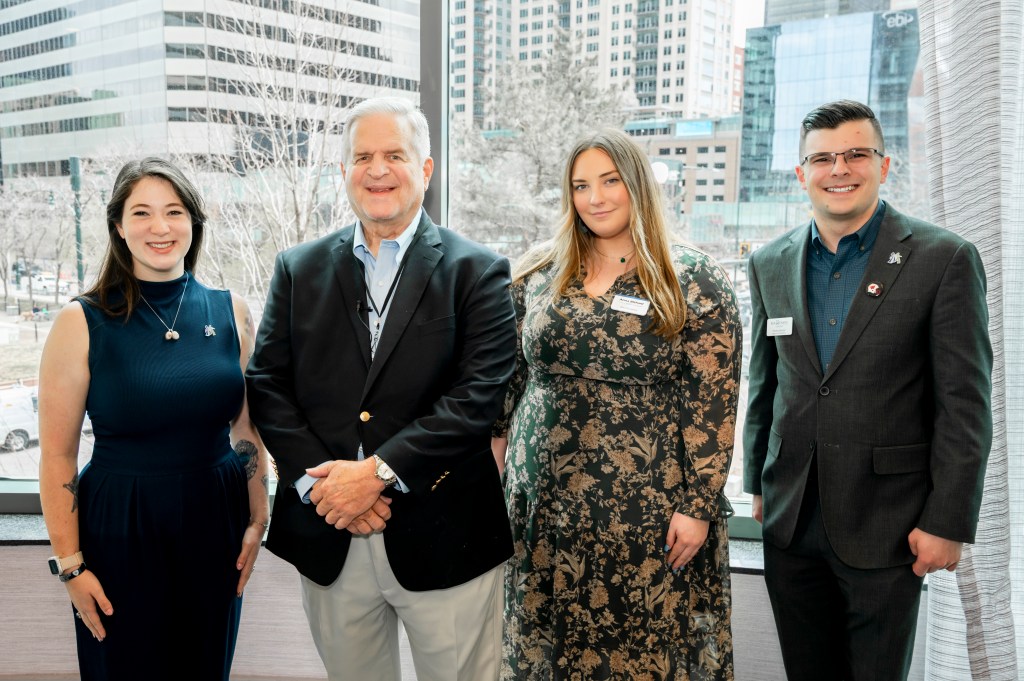Clyatt’s vision to aid the kids of injured workers became a 50-state movement
Published 5:11 pm Tuesday, May 13, 2025

- Submitted photo Pictured from left are: Annie Rule White, Kids' Chance of Texas scholarship recipient; Kids' Chance founder Robert M. Clyatt; Anna Richard, Kids' Chance of Pennsylvania scholarship recipient; and Derek Johnson, Kids' Chance of Wisconsin scholarship recipient.
When Valdosta attorney Robert M. Clyatt first founded the nonprofit Kids’ Chance in Georgia in 1988, he had one goal in mind: to give the kids of critically or fatally injured workers a chance at a brighter future.
Today, that dream has spread across the nation and become a 50-state network of nonprofits that to date have awarded more than $42 million in scholarships.
“It has become a national family to me, and to the (Kids’ Chance) volunteers,” Clyatt said. “We don’t just provide financial support: We offer internships, mentoring and lifelong connections.”
Trending
A graduate of Valdosta State, Clyatt received his law degree from Mercer University and was working as a partner in a successful local law firm when a chance encounter in a deposition room set him on the path to something much bigger than legal success.
“I was conducting a particularly lengthy deposition with an injured worker when the door burst open,” he recalled. “A young girl, maybe 10 years old, ran in toward my client—her father—and threw her arms around him. Her clothes were worn and torn.
“I thought about the kind of life she was living now, and how slim her opportunities might be for a better one,” Clyatt said. “What would it take to give this kid a chance?”
That question would not leave him. “Kids’ chance, kids’ chance,” he kept repeating to himself. And with that, a national movement was born — one that would eventually change the lives of thousands of children across the United States.
Kids’ Chance
Trending
Clyatt began by creating Kids’ Chance of Georgia, a nonprofit organization dedicated to providing scholarships to children of workers who had been seriously or fatally injured on the job. In a state where students could drop out of school at 16, financial hardship often led to premature adulthood.
“Without an education, these kids enter the workforce with no transferable skills,” Clyatt said. “And they end up at greater risk for injury themselves. Education is what can break that cycle.”
Early challenges didn’t deter him. When IRS delays threatened to stall his vision, Clyatt drove 250 miles to Atlanta to plead his case in person.
“I told the IRS representative I’d stay day and night until the application was approved,” he recalled. “She told me it had already been approved. I left with tears in my eyes.”
Weeks later, at a televised press conference at the Georgia State Capitol, Kids’ Chance of Georgia awarded its first two scholarships. But that was just the beginning. From the outset, Clyatt envisioned more than just one state organization. “A national Kids’ Chance presence was my dream from the start,” he said. “We contacted law firms, workers’ comp groups — anyone who would listen.”
As that dream caught on, other states began forming their own Kids’ Chance organizations. Over time, it became clear that for the movement to thrive nationwide, more structure and support would be necessary. Each state needed access to training, technology and financial resources to ensure every organization operated with the same level of integrity and expertise.
In 2007, Kids’ Chance of America was founded to fulfill Clyatt’s vision of a national network unified in mission and approach. KCOA helped create a framework for collaboration and quality across state lines, empowering the local affiliates while building a strong national backbone.
In 2022, the movement reached a major milestone: Kids’ Chance organizations were now active in all 50 states. Together, they have awarded more than $42 million in scholarships and support to children whose lives were turned upside down by workplace tragedy.
With its 50-state network now in place, KCOA has launched a new strategic plan focused on strengthening and unifying its affiliates, expanding scholarship opportunities, and increasing its impact.
“Now that we’ve built the foundation, it’s time to take it to the next level,” Clyatt said. “We’re focused on helping more kids — and helping them more.”
According to the U.S. Bureau of Labor Statistics, private industry reported more than 2.5 million nonfatal workplace injuries and nearly 5,300 fatal injuries in 2023. Each of those incidents could have ripple effects for a family — and a child — in need of help. That’s why programs such as Planning for the Future—KCOA’s online referral and registration platform — are critical to reaching every eligible student.
“There are thousands of children out there that we have not reached yet,” Clyatt said. “We need to spread the good news that Kids’ Chance can help them, too.”
Clyatt still shares the Kids’ Chance story every chance he gets. And though he has given decades of time and energy to the cause, he insists he’s the one who has gained the most.
“I have gotten a lot more out of this than I put into it,” he said. “Through building Kids’ Chance, I have experienced the goodness of so many thousands of people across the country. It has renewed my faith in humankind.”





